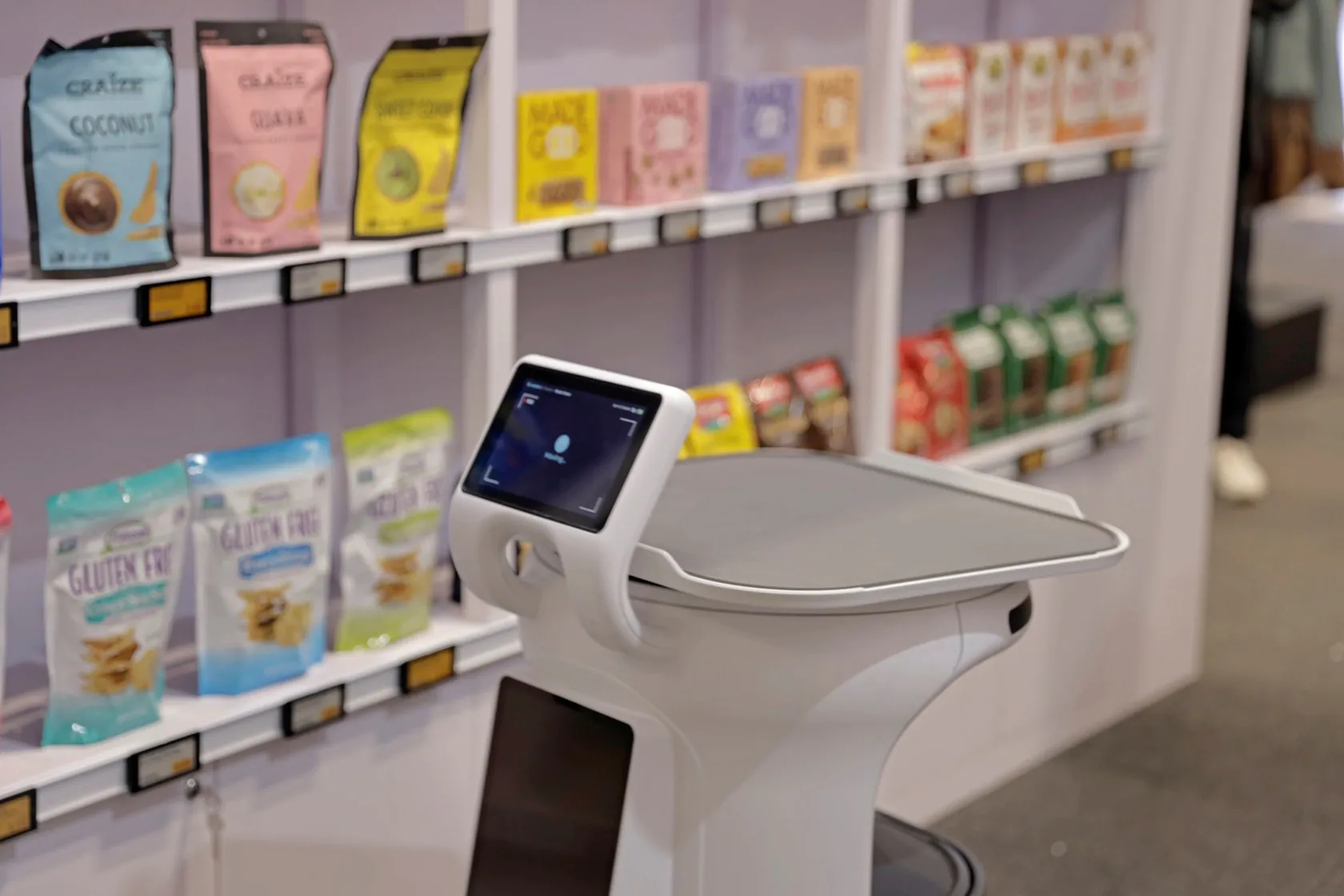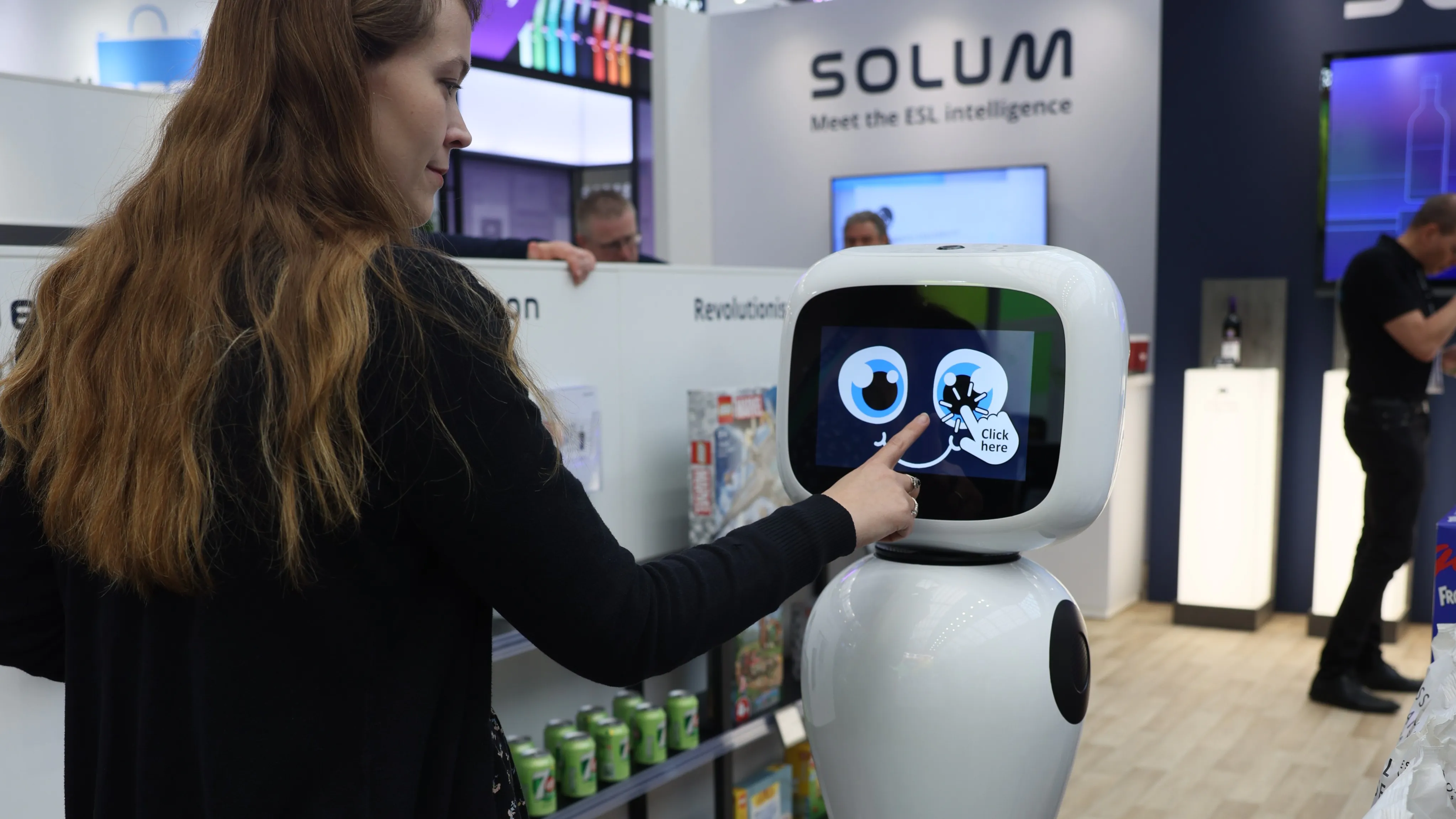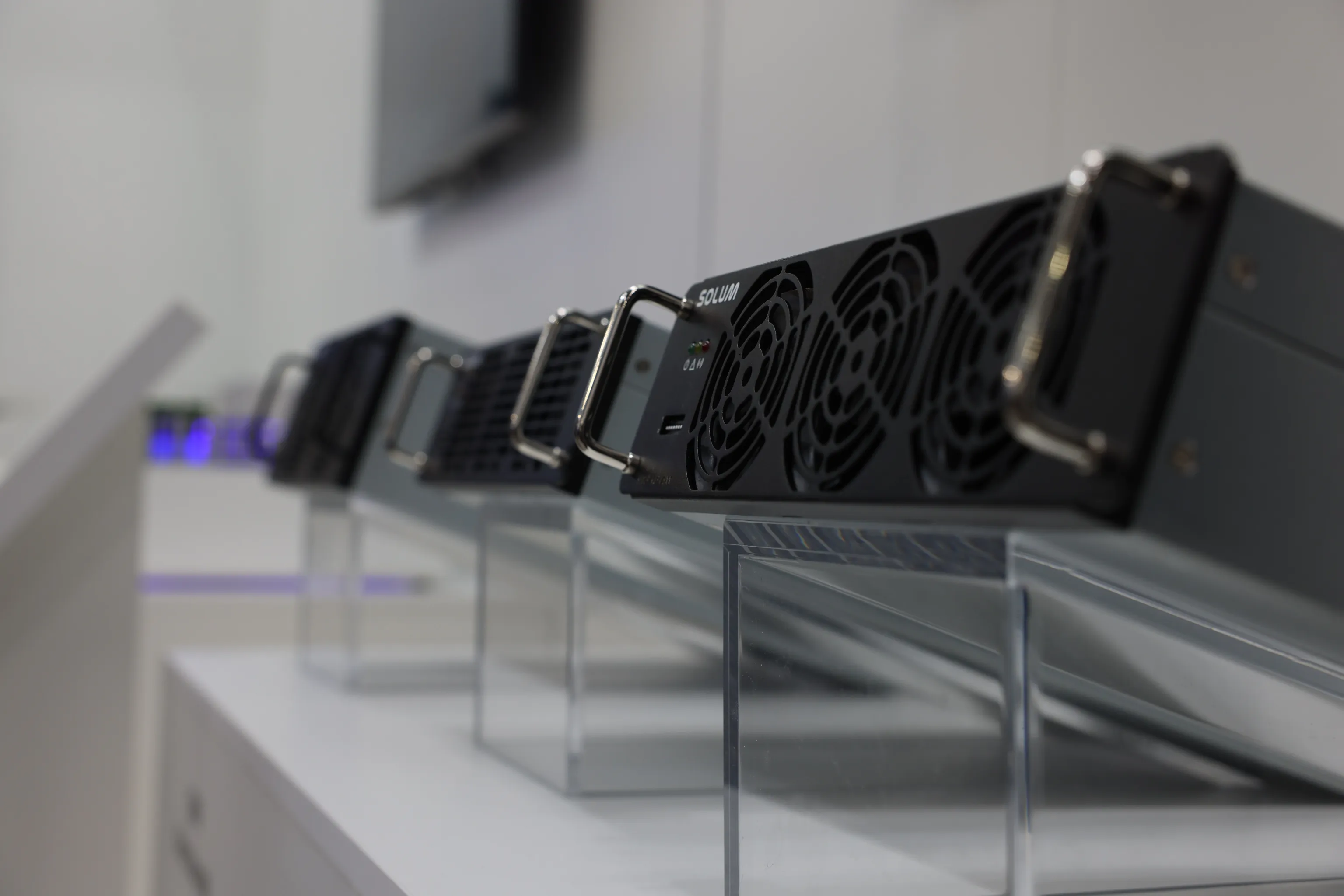Grocery Store Robots: Are They the Future of Retail?
A standard grocery run might be a thing of the past. Nowadays, when shoppers enter a grocery store, they are now able to interact with various technologies that make grocery shopping better. This includes robots. Now, a grocery store robot seems like a thing of the future for some. But this is just one of the many recent retail technologies that have entered the retail space. So what is a grocery store robot? Can it help shoppers? And can retailers put one in their grocery store?
What is a grocery store robot?
A grocery store robot is a type of autonomous robot machine designed to perform various tasks within a grocery store or retail environment and help retail staff. These robots are equipped with various advanced technologies, such as sensors, cameras, and more, to navigate through the store itself and carry out specific functions.
The use of grocery store robots is part of the broader trend of modernization and automation in the retail industry. According to a RetailWire and Brain Corp survey in April 2021, nearly half the respondents (47% of retailers) claimed that they would be involved with an in-store robotics project within the next 18 months. 64% of retailers also believe that it is important to have a robotics automation strategy in 2021. Most of these data findings in the survey can be attributed to the emergence of the pandemic. Retailers needed to find ways to provide a safe environment for their shoppers and their staff, collect data to improve customer experiences, and adapt to the industry shift toward automation.
These robots are intended to reduce manual labor, increase efficiency, improve accuracy, and enhance the overall shopping experience for customers. The specific robots deployed can vary based on the goals and strategies of individual grocery stores.
As for the consumers’ end, a PSFK report found that less than 25% of consumers believe robots would improve their shopping experience. This might mean that consumers are still warming up to the prospect of seeing or using grocery robots themselves. A big, mean-looking robot might not look friendly or approachable when people are trying to buy their groceries. This could be countered by using a sleek, small, or friendly-looking robot instead.
Meanwhile, it’s also important to note that in the 2020 Digital Consumer Survey by Euromonitor International, it was found that 45% of 20,000 connected consumers are comfortable with robots guiding them to products in store aisles. This shows positive sentiments, which can improve customer engagement and the shopping experience.
At the end of the day, it’s up to the grocery stores and retailers to choose the best grocery robot depending on their goals and their operations. It can be extremely beneficial for a grocery store and a gateway to post-pandemic modernization. They can be the face of future retail.
What are the robots used for in grocery stores?
A grocery store robot is more than just for show. For most grocery stores and retail operations, a grocery store robot can act as an extension of the retail staff. From inventory to customer service, these grocery store robots are used for varying purposes. They can be used to streamline operations, enhance the customer experience, and improve the overall efficiency of the store.
Here are some of the common roles and applications of grocery store robots:
Inventory Tracking and Management
Grocery robots that act as shelf-scanning robots. These robots use cameras and sensors to scan shelves, monitor product levels, and identify shelf items that need restocking. They help maintain accurate inventory levels and reduce instances of out-of-stock products. As a result, this can enhance the customer experience and keep operations running without overwhelming the staff.
Price Verification
A price-checking grocery store robot can also be found in some retail environments. These are equipped with cameras and optical character recognition (OCR) technology. They use this technology to verify and update price tags on shelves, ensuring accurate and consistent pricing throughout the store.
Cleaning and Maintenance
Meanwhile, robots such as floor-cleaning robots are also beneficial for a lot of groceries. Automated floor-cleaning robots are designed to sweep and mop store floors. This helps maintain cleanliness, hygiene, and safety in the shopping environment.
Customer Assistance
An informational grocery store robot, on the other hand, can perform customer assistance. These robots are deployed to assist customers in different ways. This includes providing information about product locations, offering personalized recommendations, providing additional or specific product information, and helping customers navigate the store. This further improves shopping experiences for the customers and lessens the workload for the staff.
Security and Surveillance
A grocery store robot can also be used for security and surveillance. Robots with cameras and sensors contribute to store security by monitoring for theft, suspicious activities, and unauthorized access. They might also have the capability to provide real-time video feeds to store personnel or monitor parking spaces.
Shelf Restocking
There are also autonomous robots that are programmed for restocking. These robots are designed to transport products from the back of the store to specific shelves on the main floor. They assist in the restocking process and reduce the workload on human employees, especially during rush hours and busy schedules.
Smart Shopping Experience
Grocery store robots can also take the form of smart carts. Some grocery stores experiment with automated shopping carts that follow customers around the store, allowing them to add items as they shop. These carts may also have features like automatic, mobile, or self-payment.
Order Fulfillment or Packaging
There are also robotic arms for order fulfillment in grocery retail. In the context of online grocery orders, these robotic arms may be used in the back end of the store or in dedicated fulfillment centers to pick and pack items for online customers. This enhances the operations and reduces the time spent picking items and packing orders for deliveries.
Utilizing grocery robots in stores opens a lot of opportunities and possibilities for retailers and staff. This kind of technological advancement in retail settings can make quite a difference.
What stores use robots?
For the past few years, big retailers and brands have deployed robots in their grocery stores. These robots vary in style, design, and functionality. However, one thing is clear: these stores are utilizing robots and automation to further their operations.
Here are a few well-known grocery and retail stores that are taking advantage of autonomous robots:
-
Walmart: Walmart has been testing various types of robots, including shelf-scanning robots and floor-cleaning robots, in some of its stores to improve efficiency and customer service.
-
BJ's Wholesale Club: BJ’s recently announced that they will be deploying robots called “Tally” to help track inventory among aisles. The discount warehouse chain is looking to improve stocking and inventory management with these grocery store robots.
-
Lowe’s: Lowe’s, on the other hand, is experimenting with autonomous robots to patrol their parking lots and enhance safety for store patrons and staff. They have also deployed other robots, including LoweBot, which was used for inventory replenishment.
-
Kroger: Kroger, one of the largest grocery chains in the U.S., has been actively exploring the use of robotics in its stores. This includes experiments with autonomous delivery vehicles and robotic arms for order fulfillment.
-
Ahold Delhaize (Stop & Shop): Stop & Shop, a subsidiary of Ahold Delhaize, has introduced "Marty," a shelf-scanning robot designed to identify out-of-stock items and potential hazards in the aisles.
-
Loblaw Companies Limited (Canada): Loblaw, a Canadian grocery retailer, has experimented with the use of autonomous robots in select stores to assist with parking lot delivery, inventory management, and restocking.
These various retailers are a clear sign of how the retail industry has welcomed the use of robots inside grocery stores. The future of retail is rich and clear with these different grocery store robots in use.
What are the advantages of having a grocery store robot?
The deployment of grocery store robots offers several advantages for both retailers and customers. For retailers and managers who are thinking about getting a grocery store robot automation and are still on the fence, understanding how advantageous they are can put things into perspective.
Here are some of the key advantages of having a robot in your grocery store:
Efficiency
Robots can contribute to better operational efficiency. Starting with inventory and shelf management, cleaning and maintenance, customer assistance, and much more. They help improve the effectiveness of various factors in in-store operations, providing a wholesome and well-rounded experience for the staff and shoppers.
Accuracy
Robots can accurately verify and update pricing information, as well as provide necessary details that will affect the purchasing decisions of consumers. Not only does this reduce errors and ensure consistent pricing across the store, but it also fortifies safety precautions as it allows the shoppers to be fully informed regarding ingredients, shelf life, allergy warnings, and more.
Labor Savings
A grocery store robot performing automated tasks can help retailers save labor. Robots can perform routine and repetitive tasks and free up time and labor for human employees. This includes shelf scanning, restocking, cleaning, and more. This allows retail staff to focus on more complex and customer-facing activities, urgent tasks, and more.
Better Customer Service
A lot of the grocery store robots are deployed to pay attention to the customers. Some robots are designed to assist customers by providing information about product locations, navigating through multiple aisles, offering recommendations, functioning as smart carts and mobile payments, and enhancing the overall shopping experience.
Improved Security
With surveillance robots in grocery stores, security can improve. They can contribute to store security by monitoring aisles as well as busy corners. This provides an additional layer of surveillance for grocery stores when it comes to special events, promotions, sales, holiday rush, and more. This assures that grocery stores are ready for oncoming heavy foot traffic, an influx of customers, and any other security complications.
Cost Reduction
While there is an initial investment in implementing robotics, over time, the use of grocery store robots can lead to cost savings. This can be evident through reduced labor costs in the future, minimized losses due to inventory inaccuracies, minimized legal or financial responsibilities due to a lack of product information, reduced marketing expenses, and more.
Consistency
Grocery store robots contribute to maintaining consistent pricing and inventory levels throughout the store. This helps create a more reliable and predictable shopping environment for customers. This, of course, will also lead to better loyalty and trust among a store’s customer base and potential customers.
Enhanced Hygiene
A grocery store robot dedicated to cleaning and maintenance can be a significant part of cleanliness. Automated cleaning robots contribute to maintaining a clean and hygienic store environment, especially in high-traffic areas. This makes it crucial, as cleanliness is of utmost importance in a post-pandemic world.
Data Insights
Some robots are also equipped with sensors that can collect data on customer behavior, product preferences, and store traffic. This ultimately helps provide valuable insights for retailers, which can be used to further optimize their operations and marketing strategies.
Innovation and Differentiation
The presence of robots in a grocery store is also a sign of innovation and competitive advantage. They can attract attention, foster customer engagement, create a sense of modernization, and differentiate the store from competitors. All of these contribute to a positive brand image for the grocery store.
What is an example of a grocery store robot?
The SOLUM Robot is an example of a grocery store robot that can improve efficiency in its retail environment. SOLUM Group has created this retail innovation to help centralize management and perform store staff duties.
The SOLUM Robot is equipped with:
-
Camera and sensors for navigating aisles and analyzing shelves
-
A touch-screen monitor to provide additional customer assistance
-
A geolocation to help customers with store and product navigation
-
Aims System that will help provide connection and management to staff
These features can help a grocery store function better and provide a superior experience for its patrons.
Remember that successful integration of grocery store robots requires thoughtful planning, proper training for employees, and ongoing maintenance to ensure optimal performance.
Ready to deploy a grocery store robot of your own? Talk to SOLUM Group experts now to learn more about the SOLUM Robot and how you can start using it for your own grocery business.











